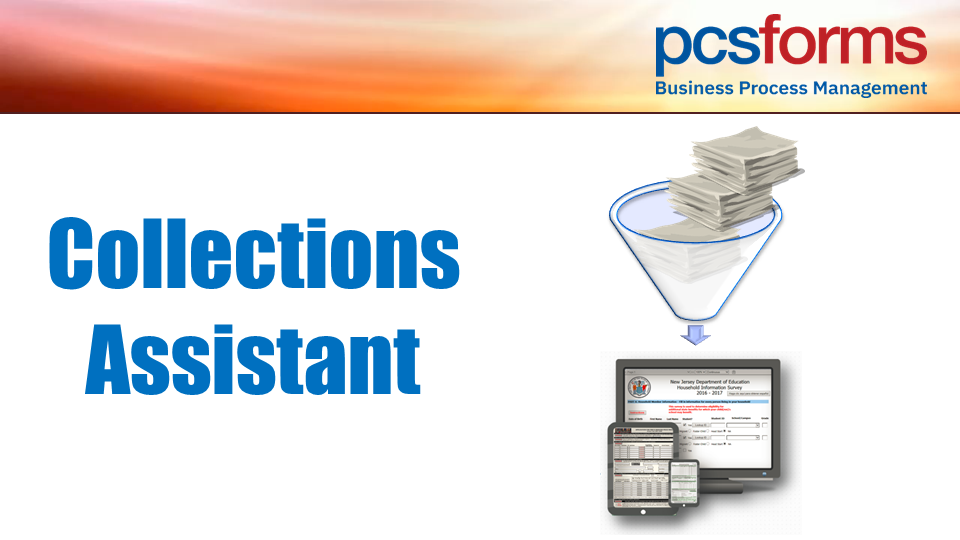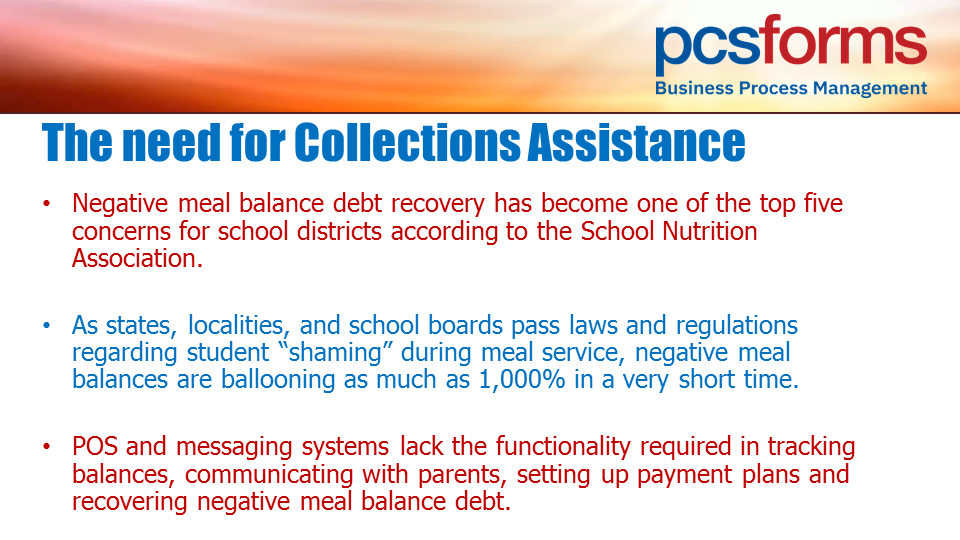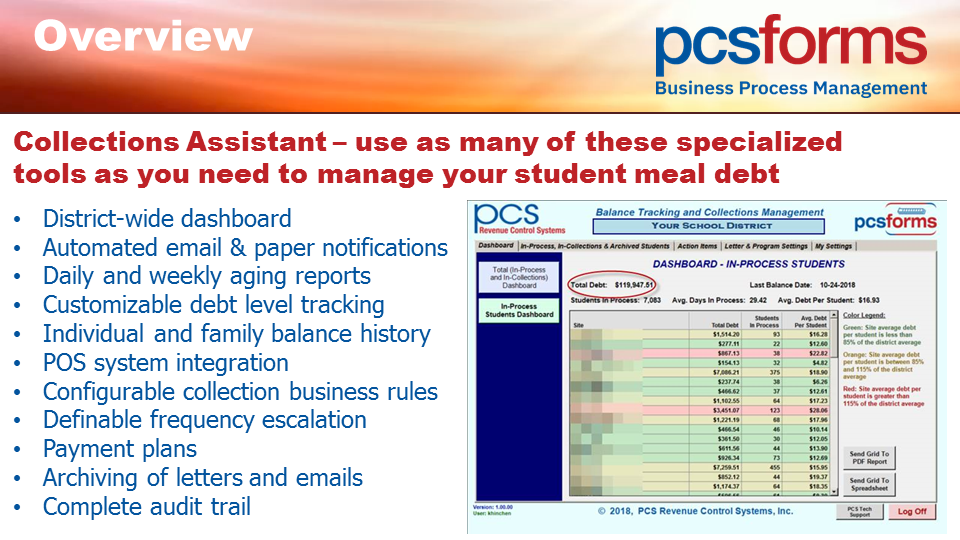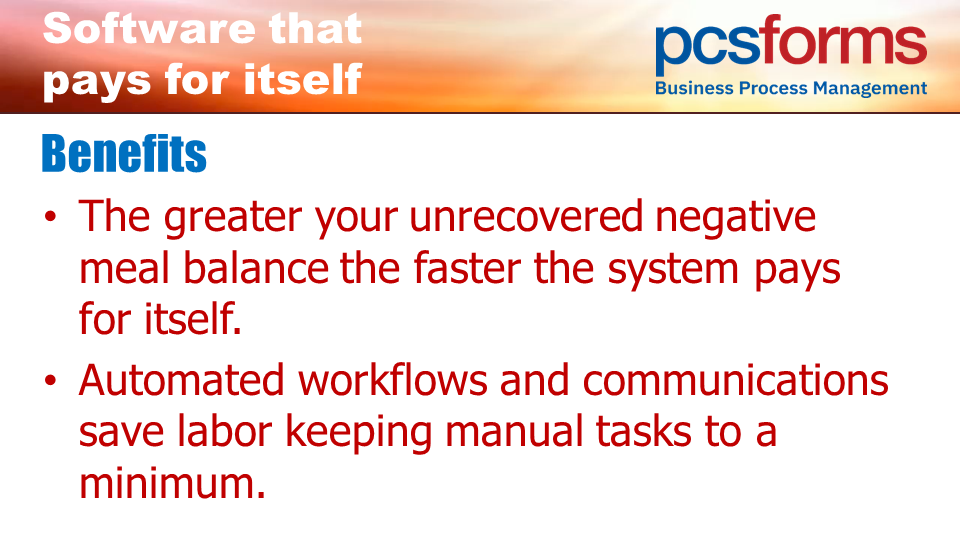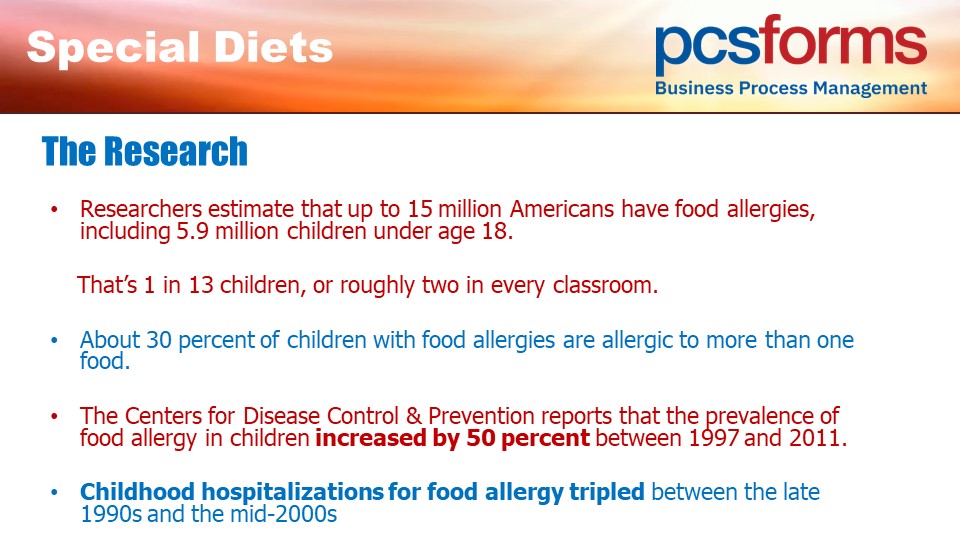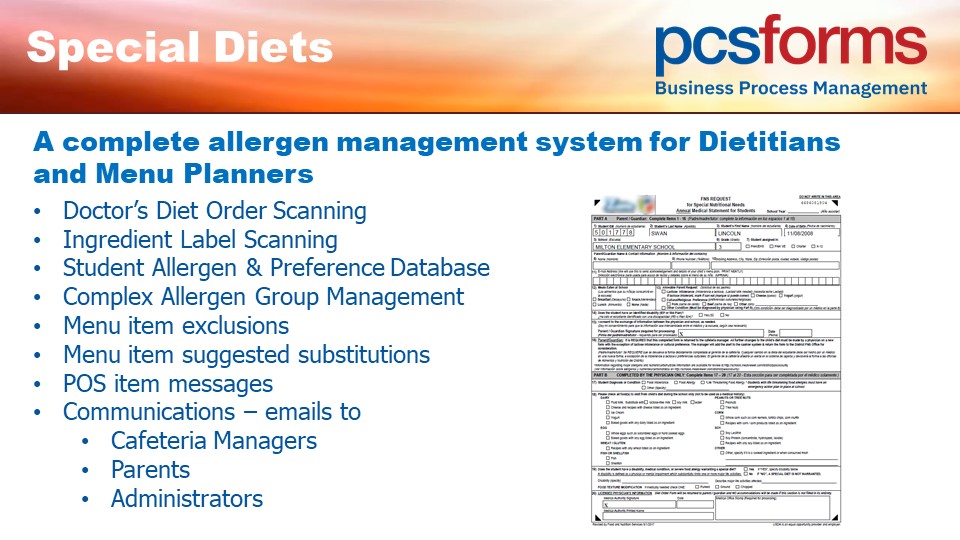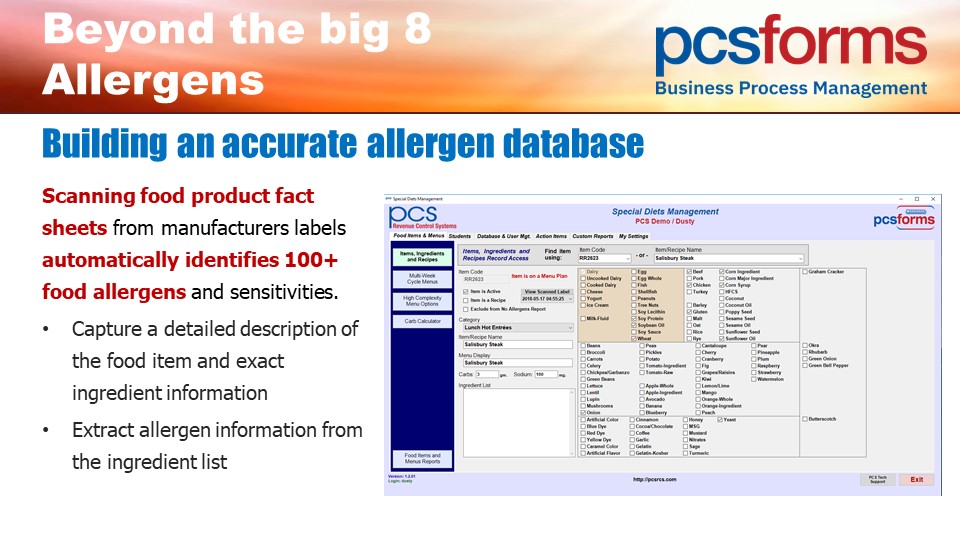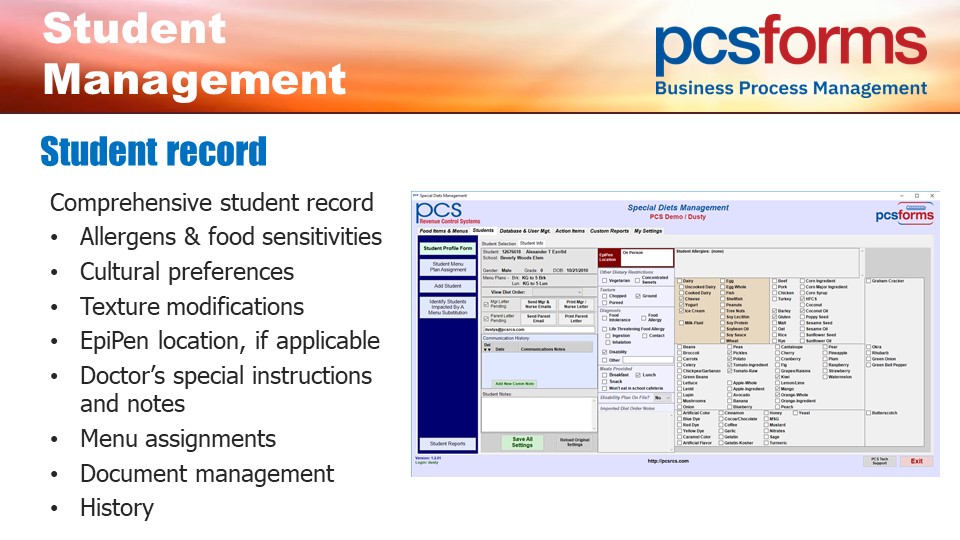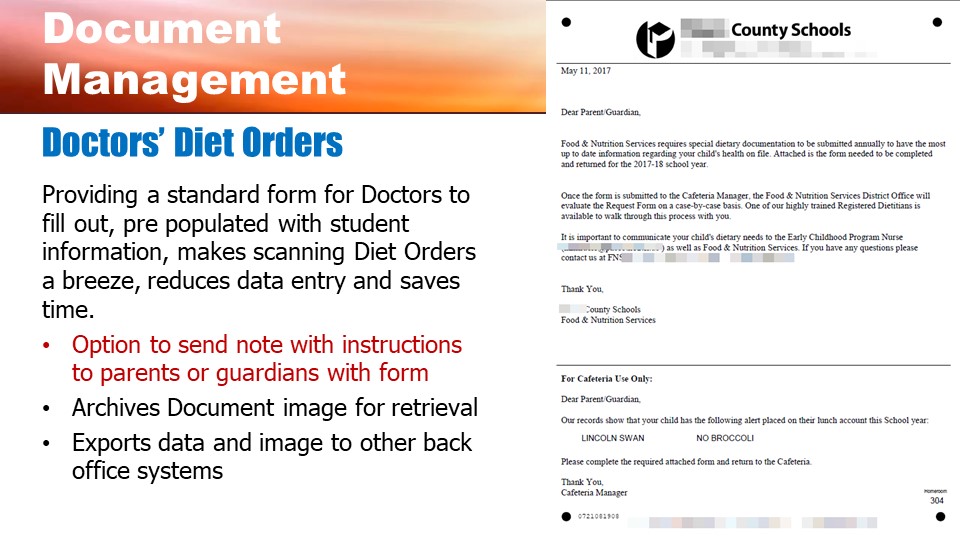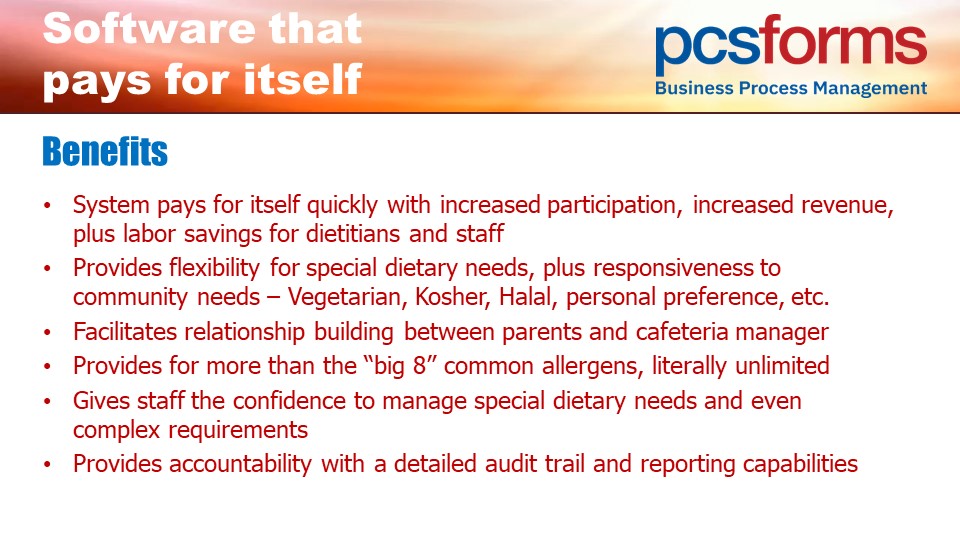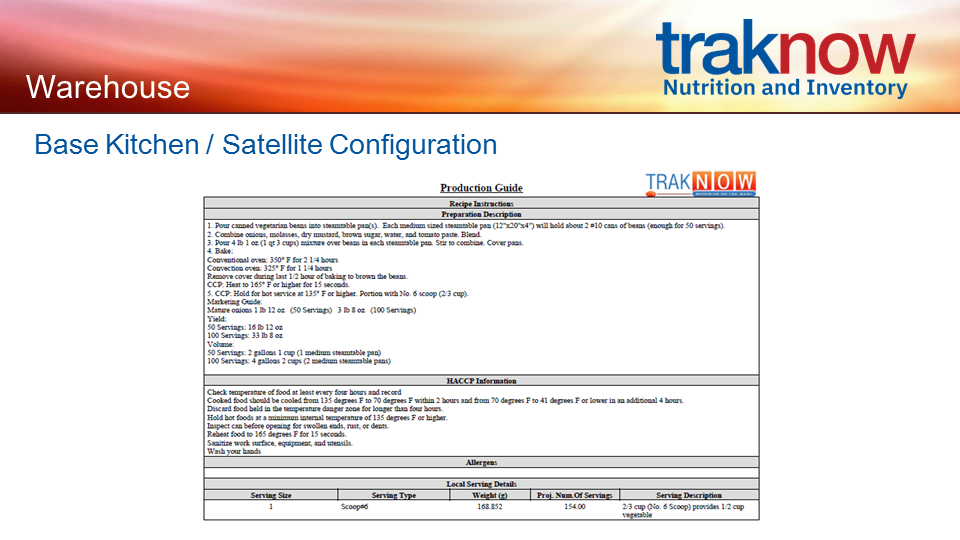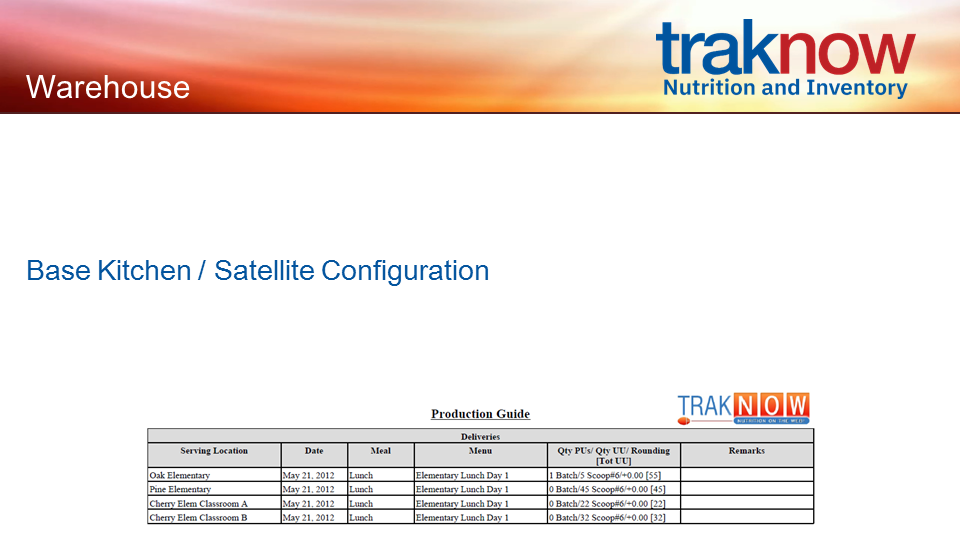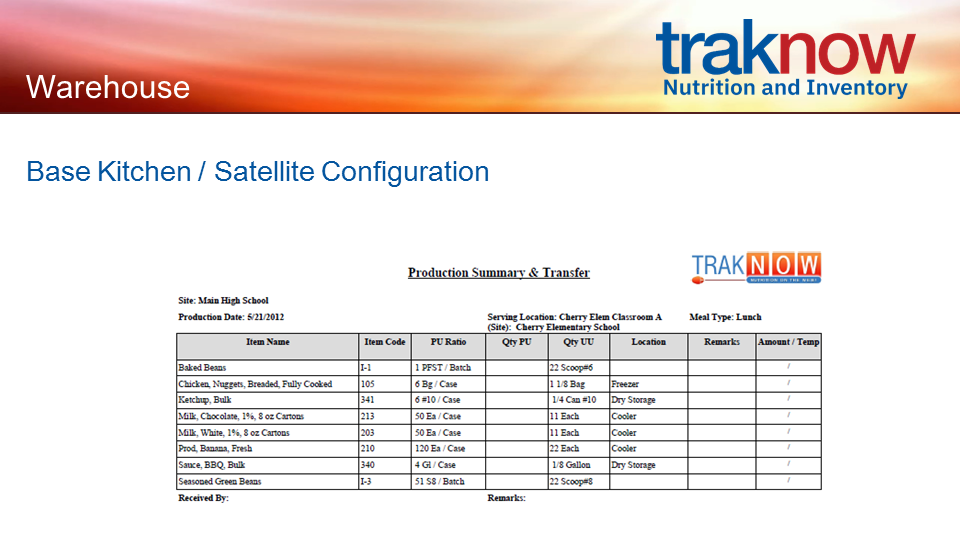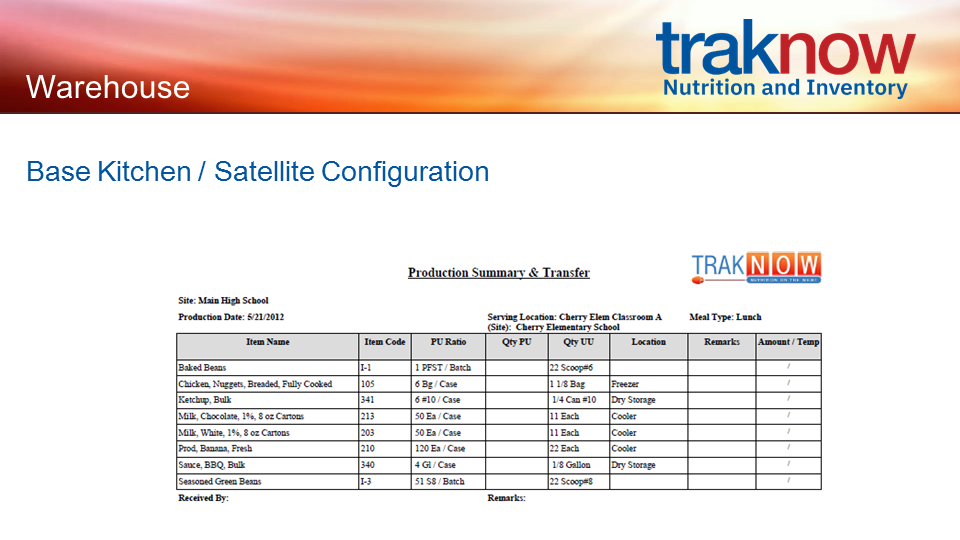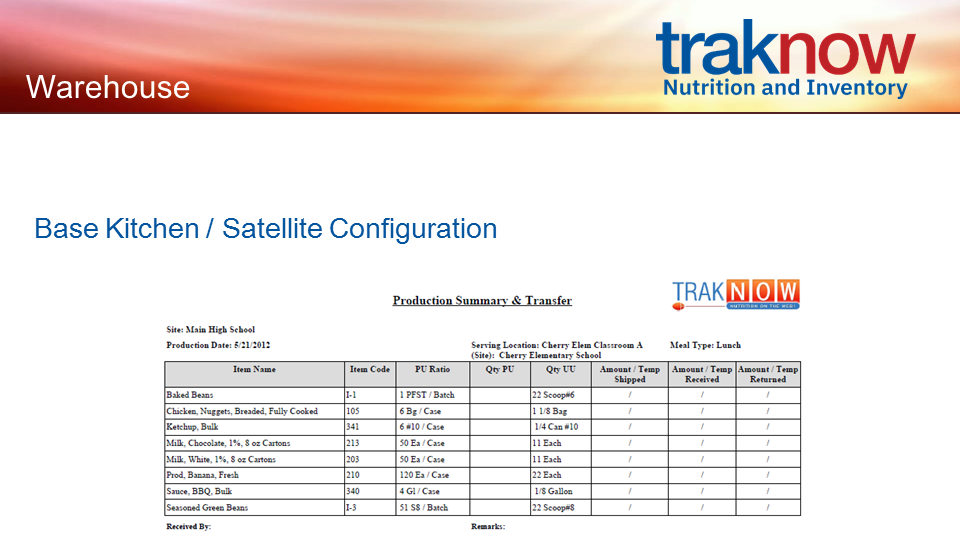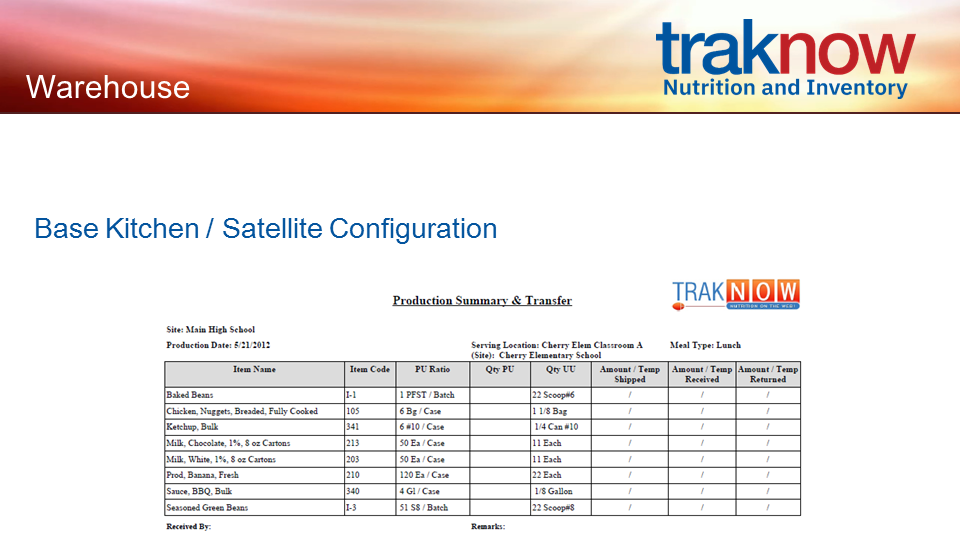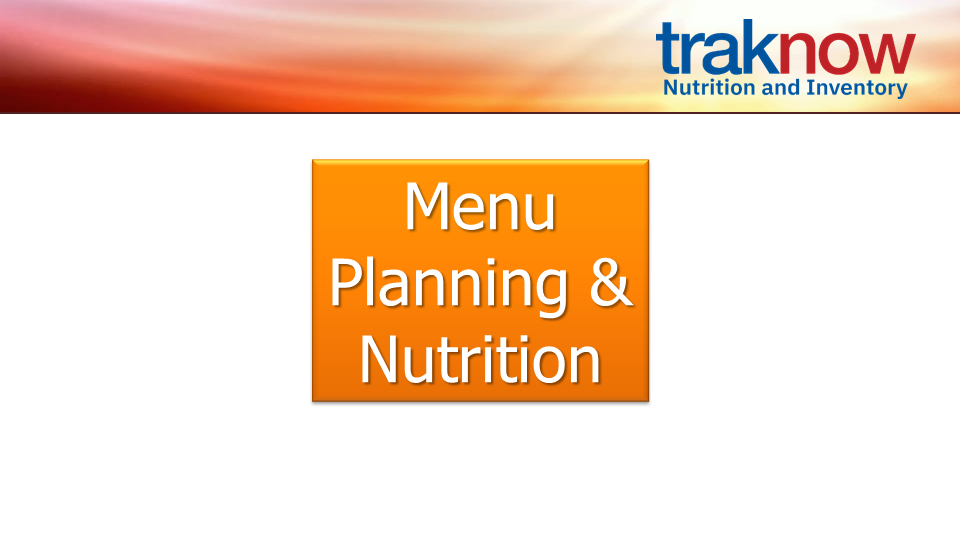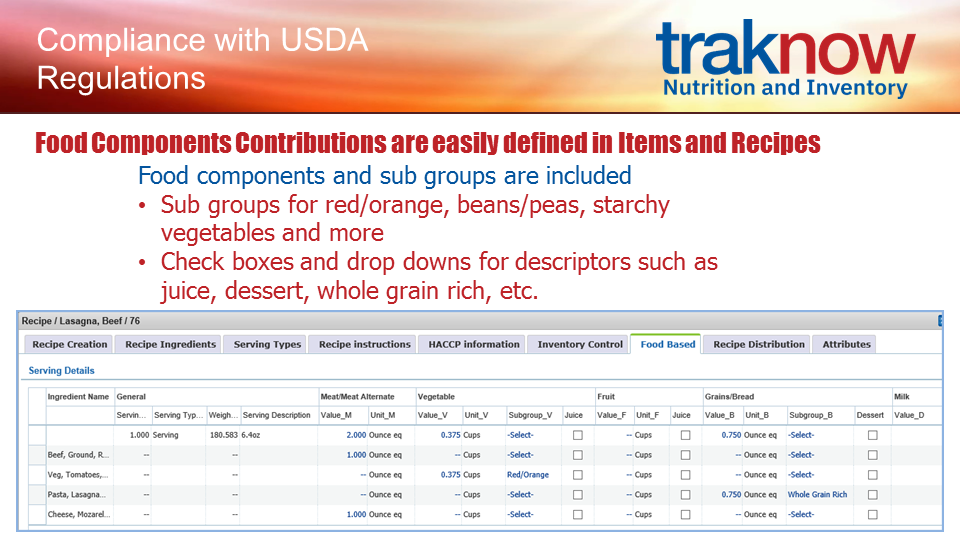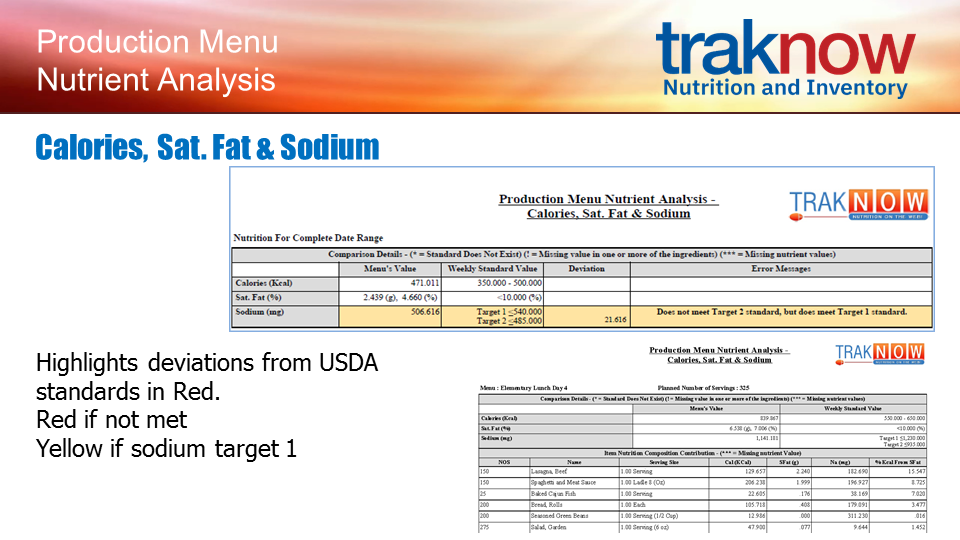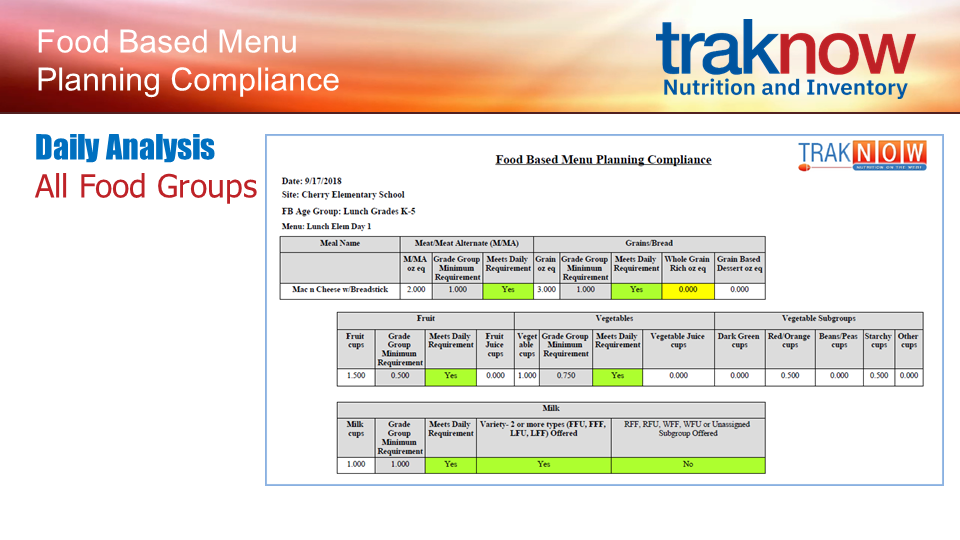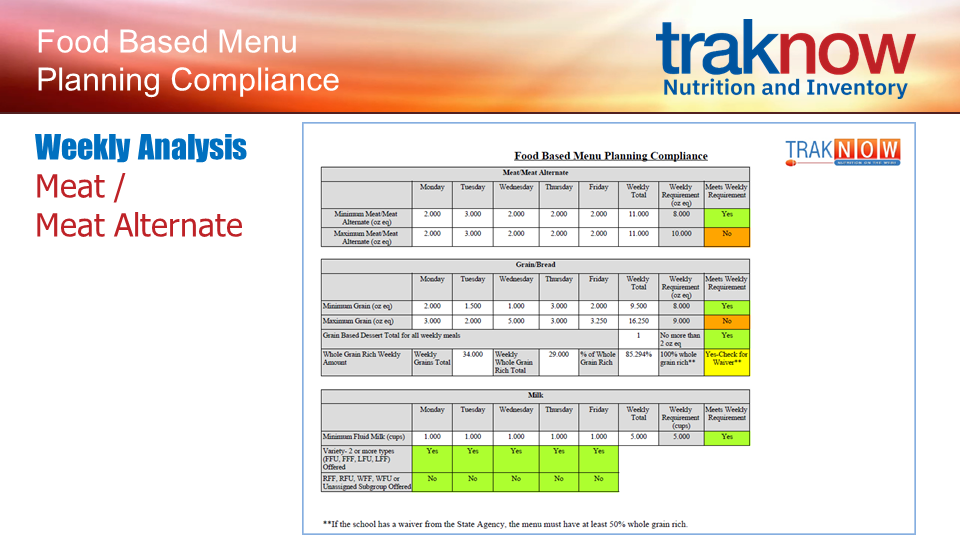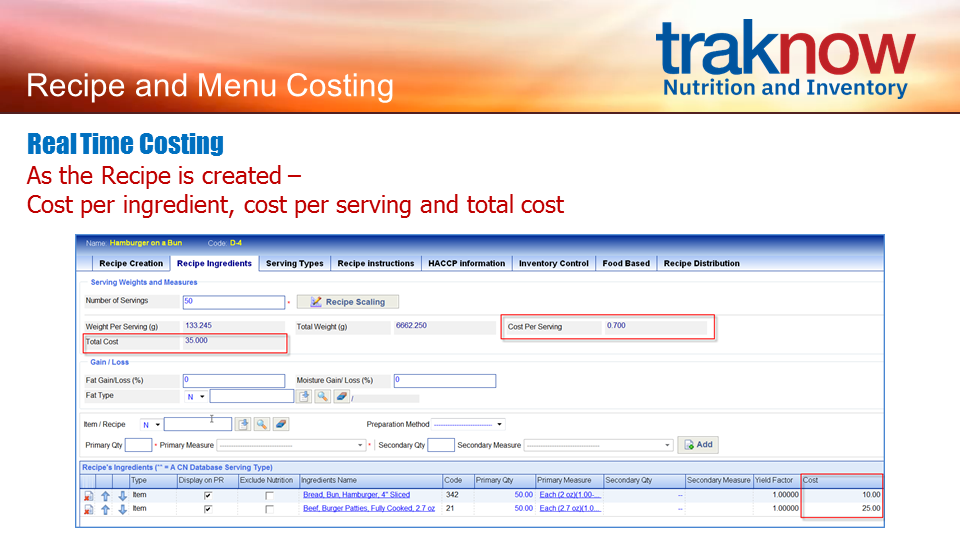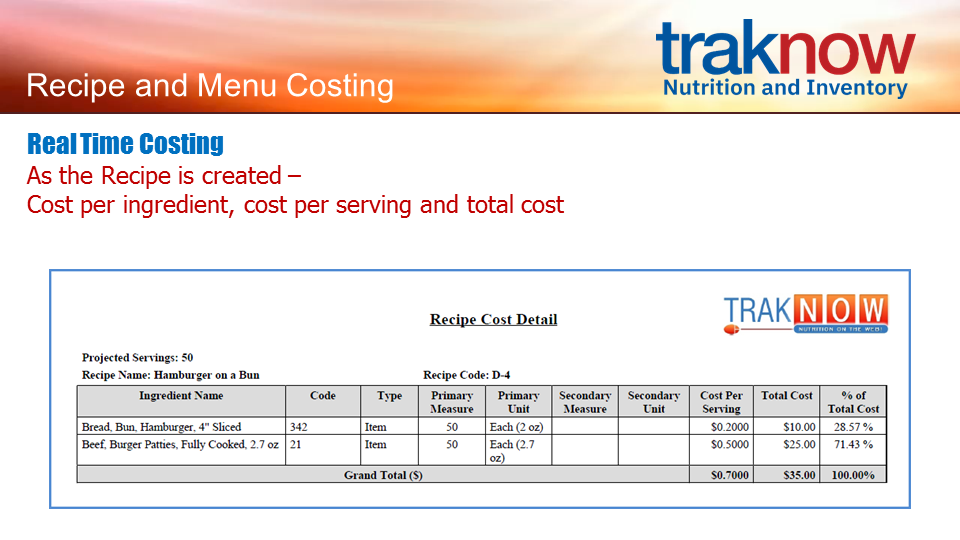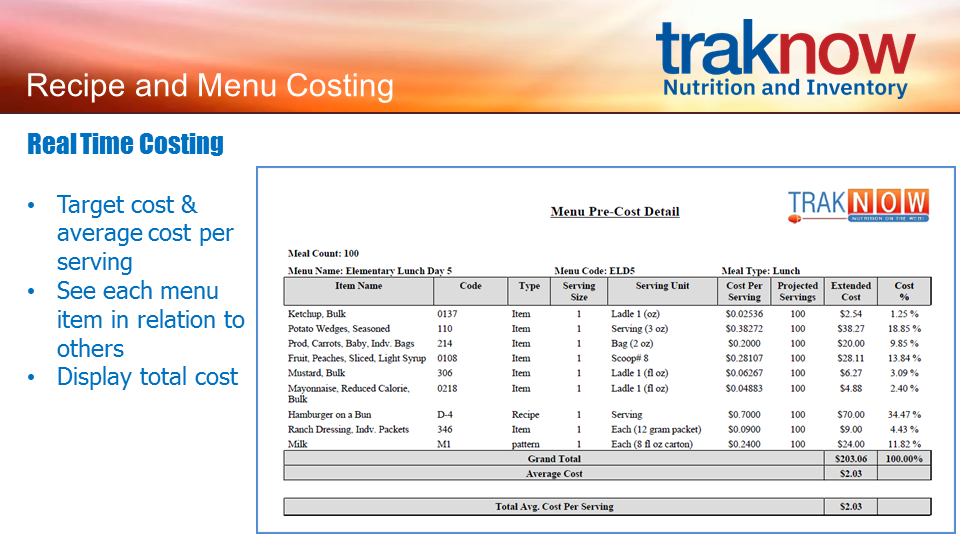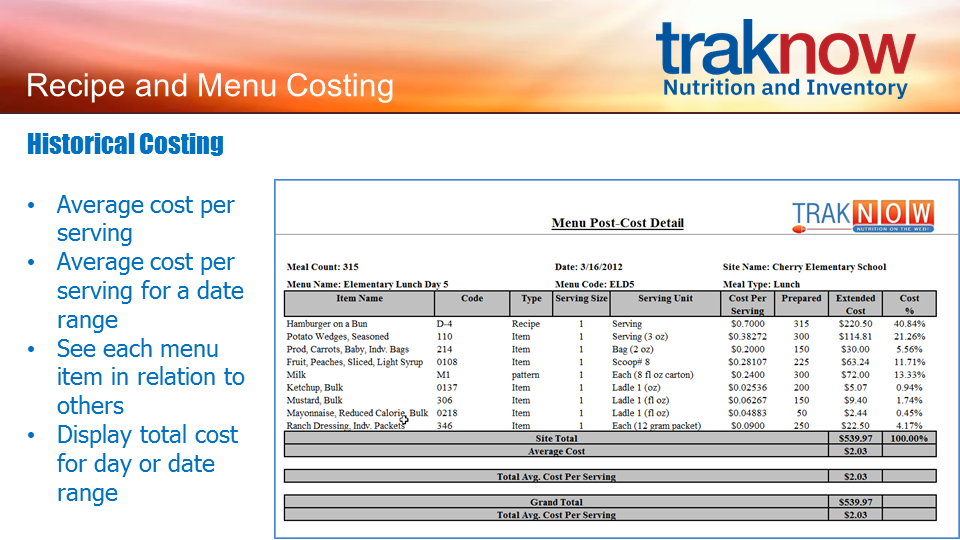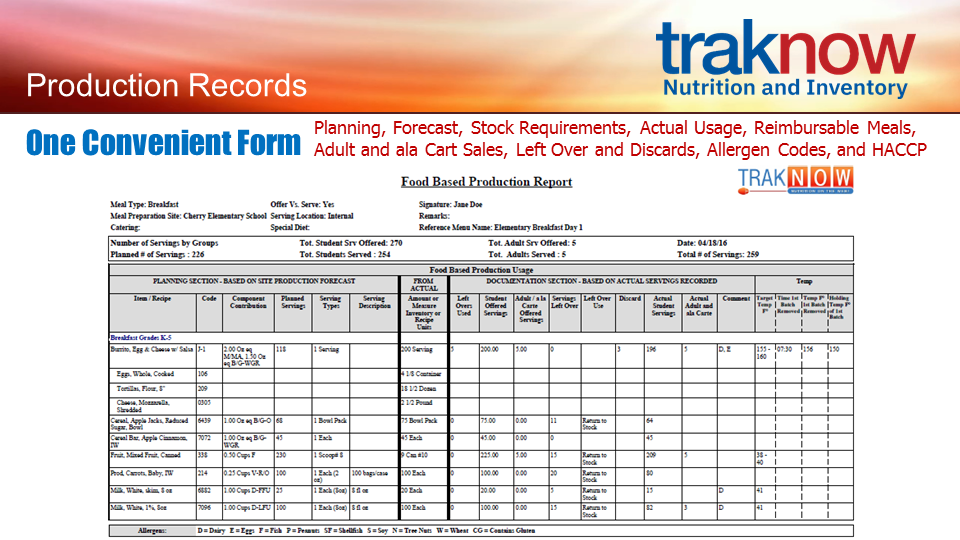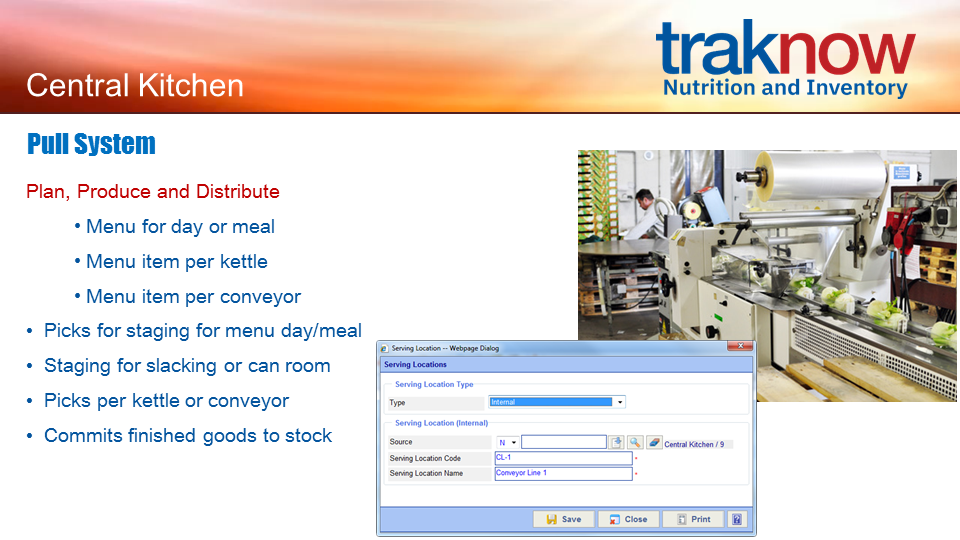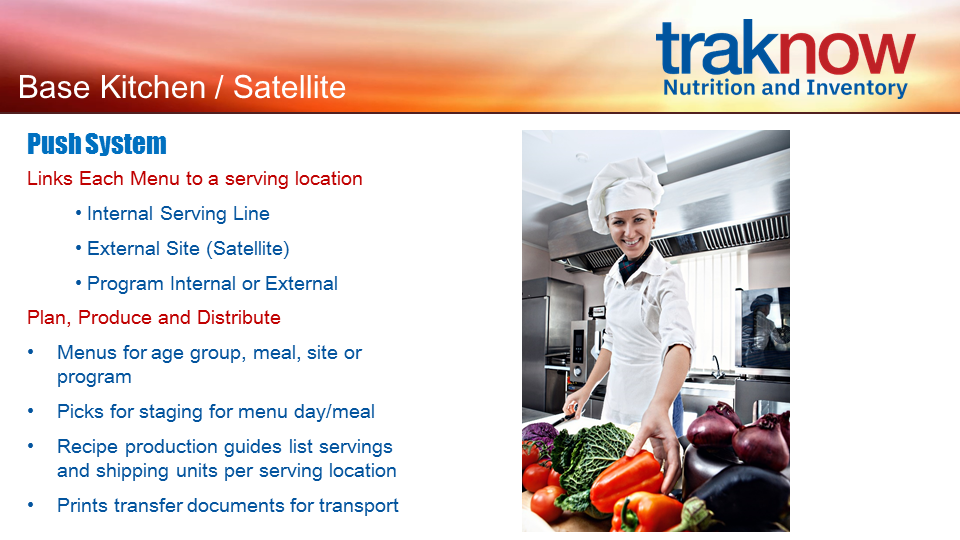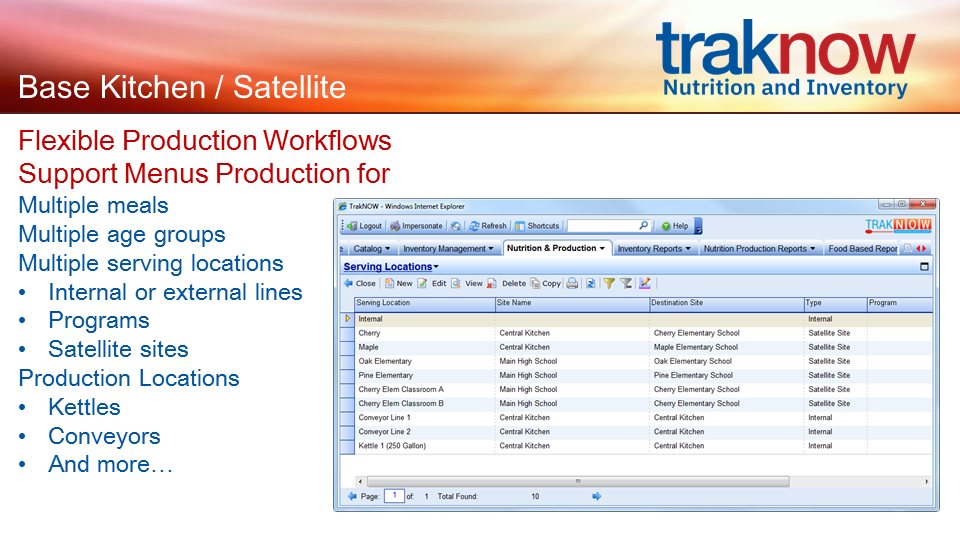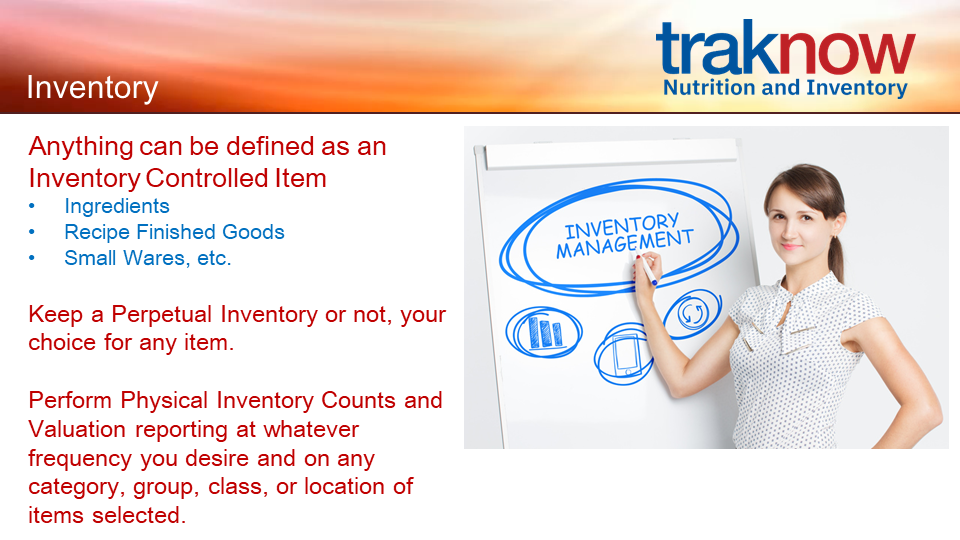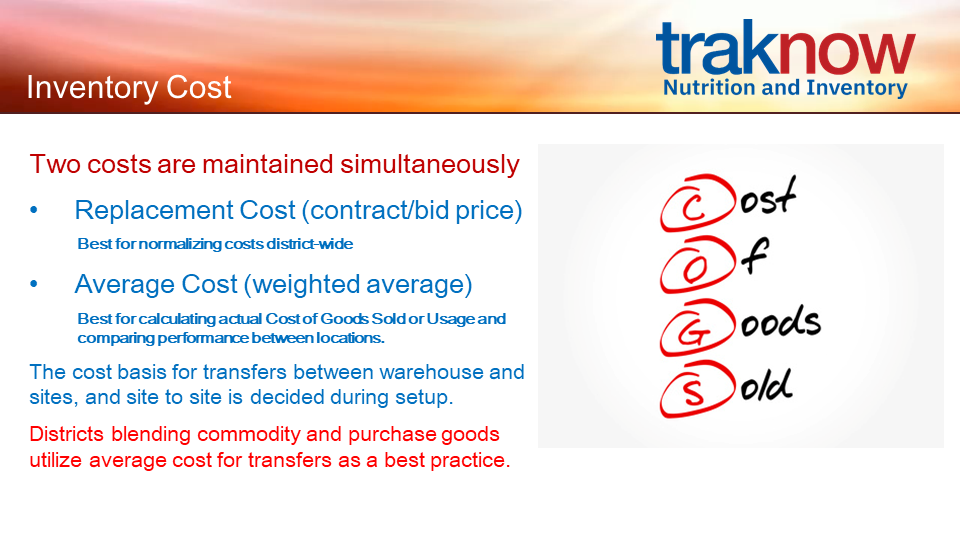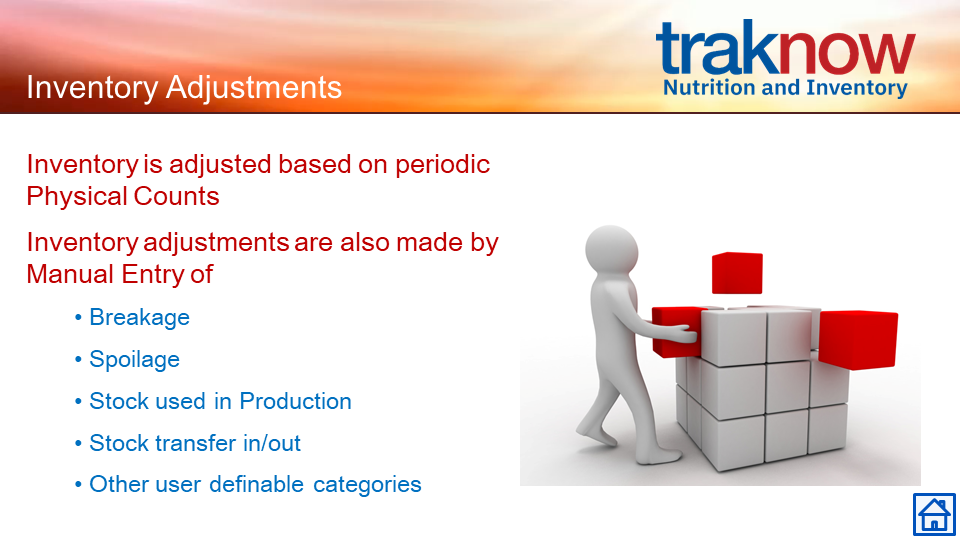Blog
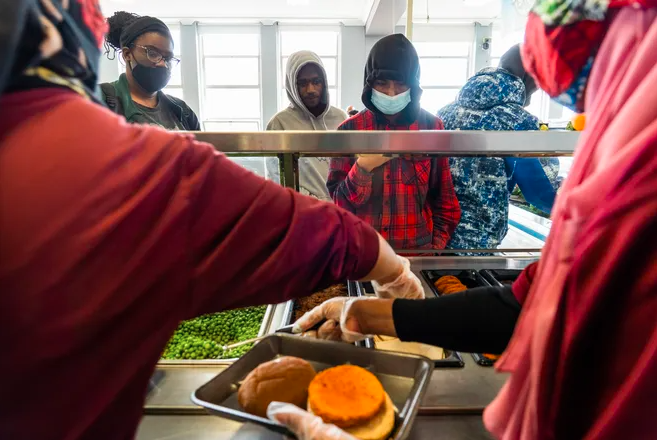
Oct
School meal debt is accruing quickly in some Michigan districts, which have returned to charging for meals following the expiration of federal waivers, says Mindy Grant, senior program manager for No Kid Hungry Michigan.
Some districts have returned to providing alternative meals, including in Livonia, where students who are unable to pay are allowed to charge as many as four meals before they are served an alternative meal of graham crackers, string cheese, milk, a vegetable and fruit.
Full Story: Detroit Free Press

Oct
TrakNOW and the Supply Chain
Gabe Aiello 0 comments Uncategorized
TrakNOW Nutrition and Inventory provides specialized search and replace workflows facilitating last minute menu and order/receive changes, even across hundreds of school cafeterias, including warehouses and central kitchens.
Supply chain issues are just a fact of life in school food service. However, since the Pandemic the supply chain woes have increased drastically. In the best of times, our TrakNOW Menu Planning, Nutrition, and Inventory software provides workflows that embody “best practices” in avoiding non-deliverables, shortages, and last-minute menu changes. But in these times, post-COVID, TrakNOW helps you to make changes quickly and efficiently when products, either ingredients, menu items, or related supplies, are not deliverable or require substitution.
When products that have been menued and ordered will not be delivered or will be substituted with another product, customers use the TrakNOW Bulk Change features. The following features can help to easily update menus and orders:
Menu Related Bulk Change Features: Allow district users to make changes to one or multiple sites on current or future days menus. Central Kitchen users also have access to the Bulk Change utility to make changes to their own menus. Changes that can be made include: Adding or replacing Items, Recipes and Patterns; Deleting Items, Recipes, Patterns, Menus, and Menu Cycles for date ranges.
For more permanent/long term changes for menus that have not yet been applied to Site Production, a special utility allows District and Supervisor users to add, delete and replace menu items for selected menus and patterns.
Item Cross Reference and Recipe Cross Reference Reports help pinpoint where selected items/recipes exist within recipes, patterns, menu templates, and menus in Site Production to assist with Bulk Changes.
Order Related Bulk Change Features: Allow district, warehouse and central kitchen users to make changes to the following order documents. Changes consist of adding, zeroing out or replacing items on Approved, Draft, and Waiting-to-be-Received Purchase Orders, On-Order Supply Requestions, and Transfers in Draft and Waiting-to-be-Received.
Learn more – Nutrition-Inventory – School Lunch POS | K-12 School Nutrition Software
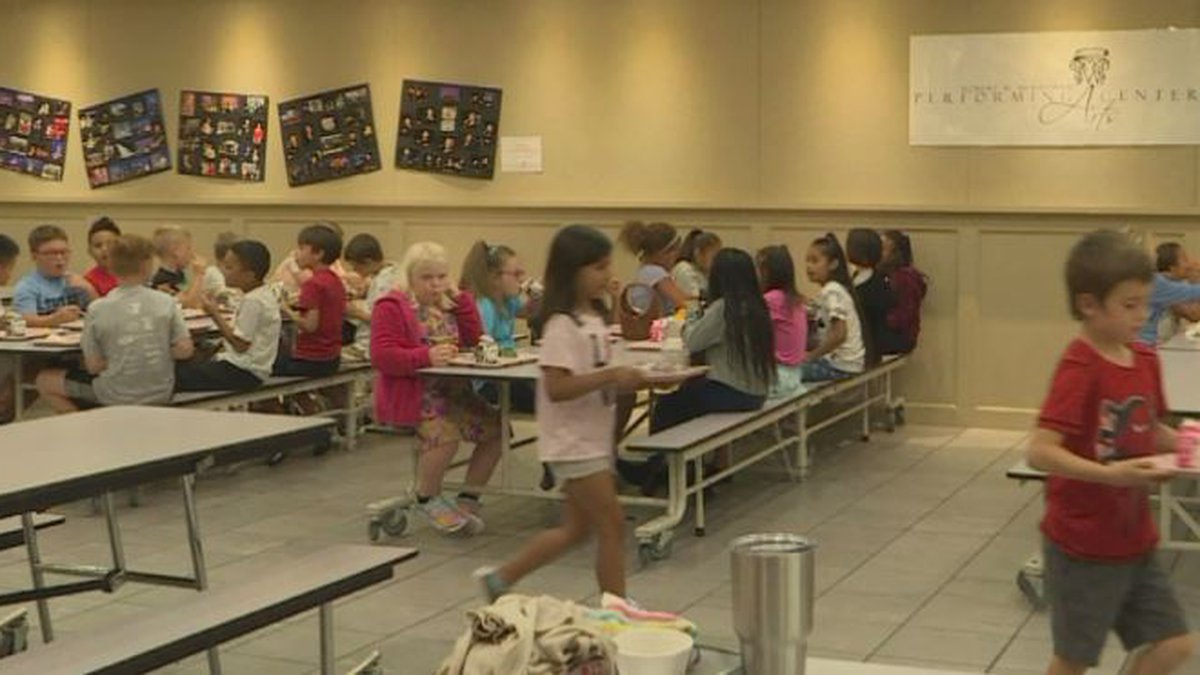
Jun
SCHOOL NUTRITION NEWS: What the Ending of the COVID Waivers Will Mean for School Lunch Next Year
Dave 0 comments Uncategorized
Schools across the country aren’t even done with this school year yet, but they are already preparing for the next one.
Changes are coming specifically to the school lunch program. Earlier this year, Congress failed to pass an extension of the COVID waivers for the next school year, which could mean many different things for your and your child.
“As we transition to regular price meals during the school year, I would imagine our numbers will significantly decrease as well because we are capturing a whole demographic of students that don’t normally eat at school because it’s no charge this year, now they are eating,” said Anji Branch, with the Gooding School District.
For the past two school years, every child has been able to eat breakfast and lunch for free at school. Next year, however, parents will have to apply for free or reduced lunch.
FULL ARTICLE AVAILABLE HERE
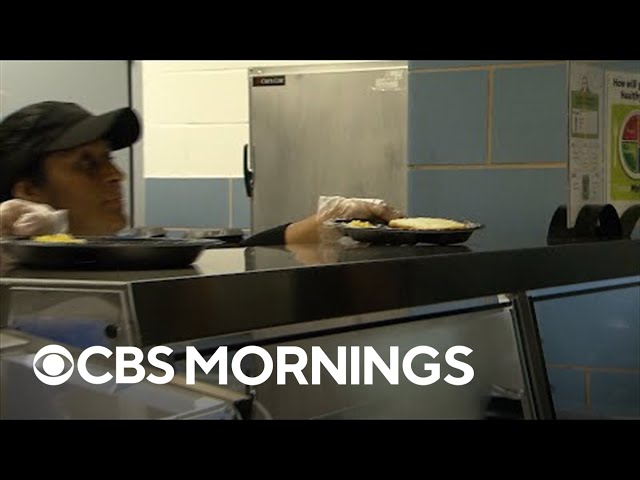
Jun
High inflation is not only squeezing family budgets across America — it is also hitting school cafeterias. The rising cost of food and ongoing disruptions to the supply chain are shrinking what’s on the menu for students across the country.
Some districts have been forced to pull back or make substitutions to deal with the spiraling cost of key ingredients. At Meade Middle School in Maryland’s Anne Arundel County, the cafeteria staff has had to improvise. They used to offer five entrees a day, but now it’s down to just one.
Elijah Lee, an eighth-grader at the school, has noticed what many students nationwide are seeing.
“We had no more condiments like ketchup and mustard and the ranch, which I loved,” he told CBS News correspondent Scott MacFarlane.
At some schools, there are no more hamburgers or chicken patty sandwiches due to problems and the price of buying buns and ketchup. Instead, they offer more tacos or bunless options and try to navigate a shortage of healthy options like carrot sticks.
“Our students are very savvy. They know what they eat, what they want,” said Jodi Risse, food and nutrition services supervisor for Anne Arundel County Public Schools.
She said that even the trays and plates have been in short supply.
“Plates became unavailable. We had to call those manufacturers and then develop those relationships to say, ‘How do we best get the trays we need to service our students?'” Risse said.
A new survey of school districts nationwide, conducted by the School Nutrition Association, reveals 97% of meal programs reported challenges with higher costs while 98% acknowledged problems getting some menu items.
In Montgomery County, Maryland, a tray of lunch food is costing the district, one of America’s largest, about 15% to 20% more than it did last year, said Jeanie Dawson, the district’s chief of finance and operations.
Costs of some ingredients are so volatile that many U.S. schools are making last-minute changes to the monthly menu, which used to be set in stone.
“So we are down to weekly menu planning, and our families and even our students and staff are not used to that,” Dawson said.
The district was also planning to serve vegan sauces and vegan soups because such items are actually easier to procure right now.
School lunch costs are poised to rise again on July 1, when an emergency measure enacted at the start of the pandemic expires. The U.S. Department of Agriculture, which has been offering schools $4.56 reimbursement for every meal served, will reduce that reimbursement to pre-pandemic levels — $3.75.
In Anne Arundel County, the school district could lose about $700,000 a month in reimbursement, Risse said.
“That’s huge,” she said. “That’s going to be a big hit for us
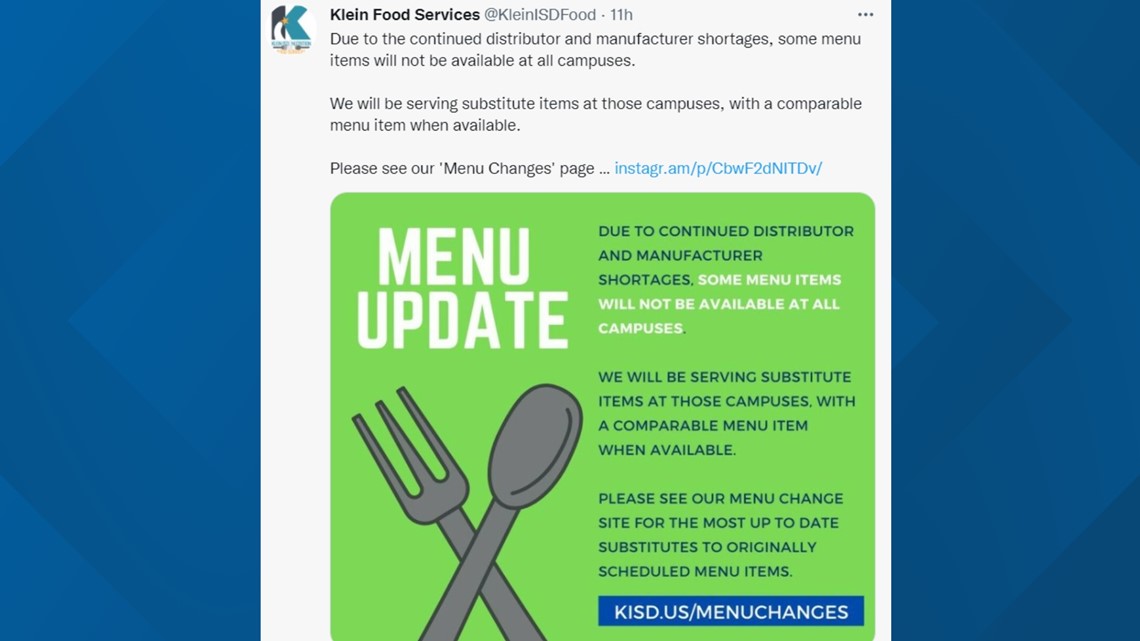
Apr
Lingering impacts of the pandemic are still on the menu in many school cafeterias.
“We’re still dealing with certain food item shortages,” said Fort Bend ISD Child Nutrition Executive Director Matt Antignolo.
He told us chicken products, in particular, remain challenging.
But shortages are not limited to what you can eat.
“Cutlery kits, styrofoam trays, what I would call traditional nacho boat food trays,” said Antignolo. “We haven’t seen those in months or been able to get them.”
Klein ISD’s Food Services Division put out this message this week which told families that due to continued distributor and manufacturer shortages, some menu items would not be available at all campuses.

Credit: Klein ISD
Read Full Article HERE
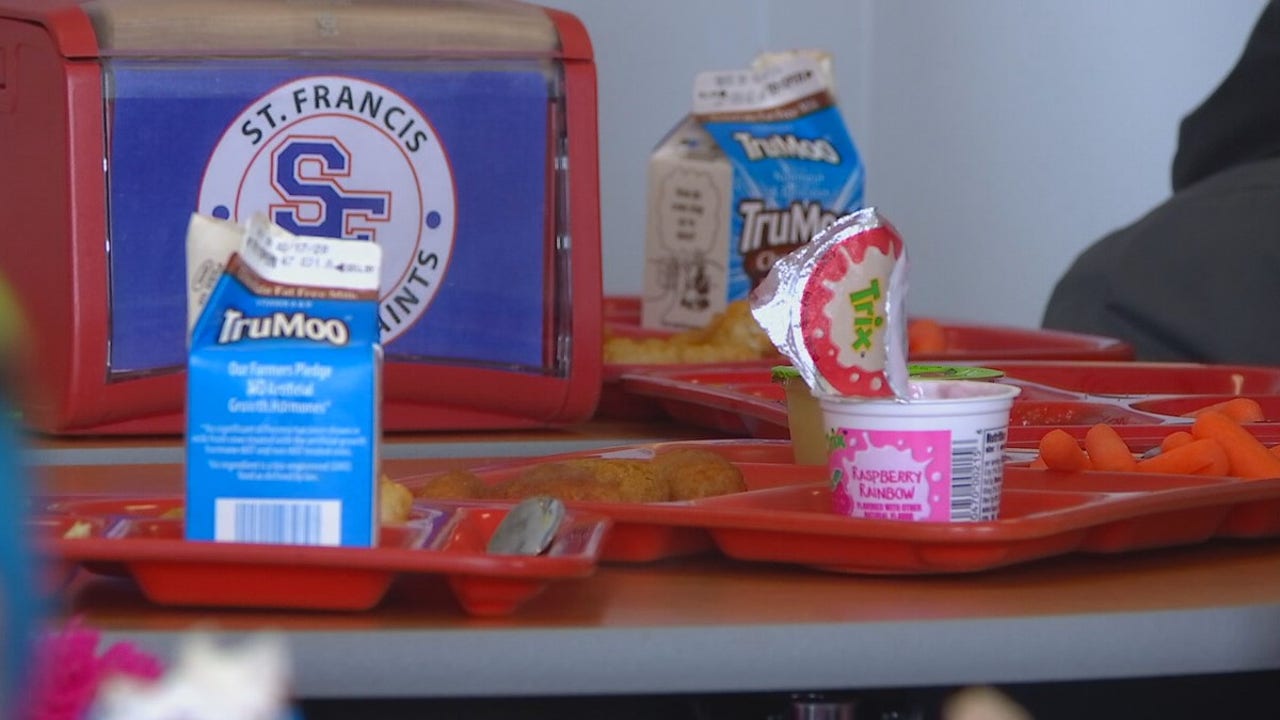
Jul
Minnesota lawmakers approved changes to school meal programs that stops what many advocates call “lunch shaming.” And there’s hope more steps will be taken to make free school lunches permanent.
Colleen Moriarty said she’s been working for the last decade to make sure public school students are no longer embarrassed because they can’t afford their lunch bill.
“Ten years ago we heard about snapping rubber bands on kids’ wrists, collection agencies going after families…lunches being dumped in front of kids,” Moriarty said. “Or, you get to enter your code for lunch and they say ‘oh no, I’ll take that lunch from you…you can just have this cheese sandwich …or you can have this cheese sandwich and eat it in the principal’s office.’”
But a new education finance bill passed by state lawmakers changes how schools deal with students with lunch debts.
The move from state lawmakers comes after the Biden administration gave school districts nationwide the greenlight to continue offering free lunches for students until the end of the 2022 school year.
Via: FOX 9. Full Article HERE

Jul
Commissioner of Agriculture Nikki Fried announced her department had secured $93 million from the USDA to help supplement a $262 million hit endured by school districts on lost lunch revenue throughout the pandemic.
The Tuesday, July 6 announcement came after Fried claimed her calls for the Governor to redirect federal COVID relief funds towards the problem went unanswered.
She said the money will help rebuild reserves and ensure the 71 percent of Florida school children receiving free and reduced lunches in the state won’t go hungry.
“So many of our children, this is the only meal that they get a day, is at their schools. So we have to do everything possible to make sure that our children are getting fed and are getting fed nutritional meals,” said Fried.
Fried said the first of the money began flowing to school districts last week and districts opting for paper checks can expect the relief cash in the coming days.
Via: ABC 3
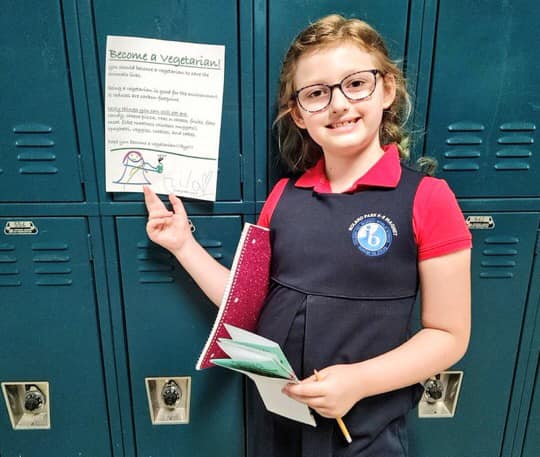
Jun
While many families and kids were preparing for summer break, in the last week of classes, Lila Miller, a second-grader at Roland Park K-8 in Tampa, wanted to make sure all kids have something they can eat on the school lunch menu.
Miller, who became a vegetarian more than a year ago, developed a revised menu with more plant-based and meat-free options. Then, thanks to her assistant principal, she met with the school’s nutrition manager to present it.
Miller hopes this will help reduce the school’s carbon footprint and help the environment.
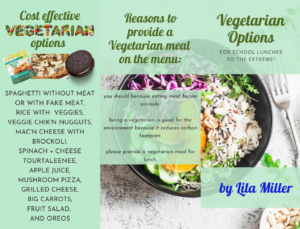
“If the world gets too hot, we won’t be able to exist on Planet Earth,” she said.
She also is an animal rights activist.
“I don’t want to hurt the animals,” she said.
Now, thanks to Miller, Roland Park K-8 agreed to bring back “Meatless Mondays” starting this fall.
Published with permission from ABC NEWS
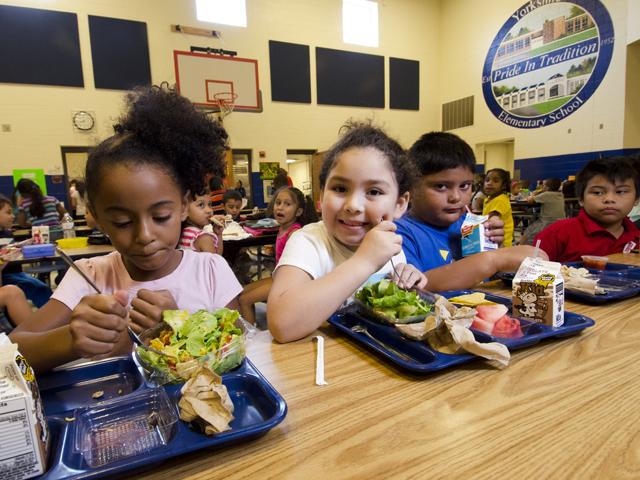
Jan
The National Council of Farm Cooperatives said the executive order President Biden signed Monday to enforce and strengthen “Buy American” provisions should lead to oversight of Agriculture Department school meals purchases.
“The president is taking action to reset the U.S. government’s longstanding approach to domestic preferences to create an approach that will remain durable for years to come and grow quality, union jobs,” the White House said in a fact sheet about the executive order.
“The president’s executive order establishes the goals and standards necessary to use federal purchasing, and other forms of federal assistance with domestic preference requirements, as a way to proactively invest in American industry so it can continue to lead in the global marketplace.”
The White House noted that the executive order refers to “domestic preferences related to federal procurement, federal grants, and other forms of federal assistance. Buy American and Buy America refers to the specific statutes that go by those names,” adding that a director of Made in America will be appointed in the White House Office of Management and Budget to oversee implementation of the order.
NCFC noted that it and its members have expressed deep concern in recent years over a marked increase in the amount of foreign-produced food served under the school lunch and breakfast programs “when comparable American-grown products are readily available and competitively priced, something that is contrary to the intent of the Buy American provisions.”
The White House fact sheet did not make specific mention of school food purchases.
“On behalf of America’s farmer co-ops and their member-owners, I would like to thank President Biden for signaling his strong support for ‘Buy American’ provisions as a way to ensure good jobs and prosperous local economies across the country,” said Chuck Conner, president and CEO of NCFC.
“At the same time, the previous administration started by making a similar show of support for these provisions, but failed to put substance and action behind its words. Hopefully, by appointing a new director of Made In America within the White House, this administration will be more active in enforcing existing requirements in the law and in working with Congress to strengthen these provisions.”
NCFC said that examples of schools buying foreign foods are:
– 81% of apple juice served in U.S. schools is imported;
– 50-60% of the fish served in schools are caught by Russian ships and processed in China;
Read FULL ARTICLE HERE
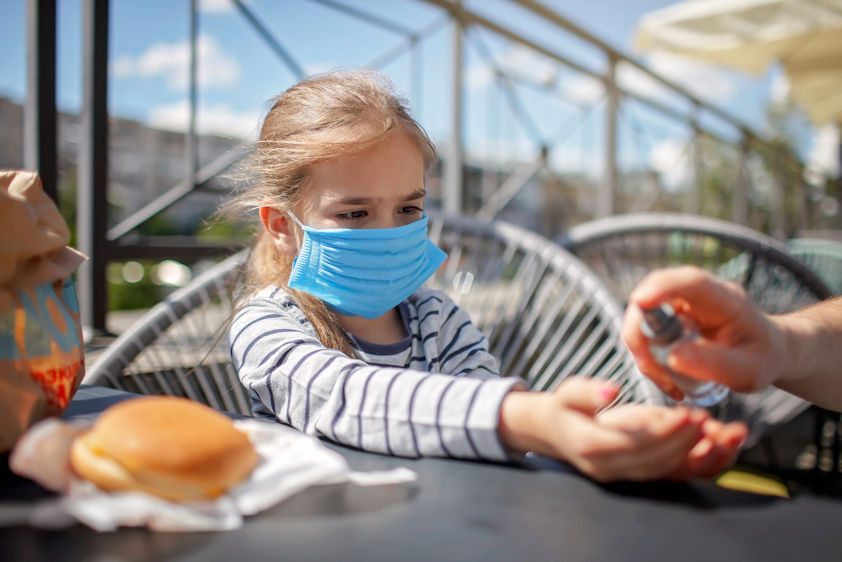
Oct
National School Lunch week shines the spotlight on the programs and nutritious food that’s served up every day all year long at schools across the country.
“We have the opportunity in the state of Alabama to reach approximately three quarters of a million children on a daily basis for meals,” said June Barrett, Alabama Child Nutrition Program Coordinator for the state Department of Education. Nationally, the School Lunch Program serves nearly 30 million students every school day.
“If a child is hungry, they cannot learn. And I think that that’s probably the biggest message that we need to provide to parents and to the community in general,” Barrett explains about the importance of the School Lunch Program. “Because if a child did not come to school, having eaten breakfast, did not have an opportunity to eat lunch, then they would not be able to sit in the chairs and learn from the teachers or listen to what the teachers are trying to present to them.”
The coronavirus pandemic has added some major challenges to the mission of making sure every child is fed.
“Some of the challenges our local Child Nutrition directors face were actually making contact with the children once the schools were released in March,” Barrett said. “We did provide meals, we had curbside pickup. We thought out of the box as much as you could possibly think out of the box and provide meals to children. And it’s been very, very valuable. We’ve partnered also with our Department of Transportation, and meals were actually delivered by bus drivers through certain communities. We’ve had all sorts of opportunities to encourage children to dine with us. We have the fresh fruits and vegetable program and USDA allowed us to extend that to the to the children who were at home learning during virtual learning processes. So we’ve really tried as diligently and served as many children as we could serve meals and food while they were away from the school grounds.”
The theme for this year’s National School Lunch week is “Now Playing” and it’s “centered around Hollywood themed processes,” Barrett explained. “So anything that could be done on a movie theater basis, fun and having tickets to go through lunch line, you know, go through the meal process or special things that could connect. Now Playing in the theater role with the National School Lunch Program would just be something that would add to the perspective of receiving a meal and having fun, and that’s what National School Lunch week is, just really all centered around having fun with children.”
Republished with permission WSFA 12 News.

 Contact
Contact 